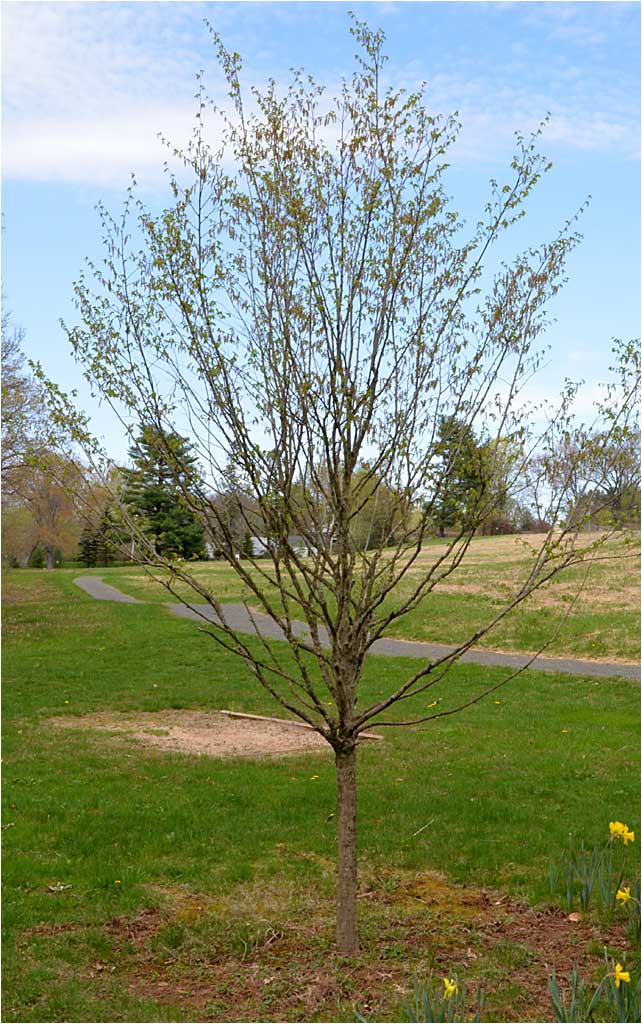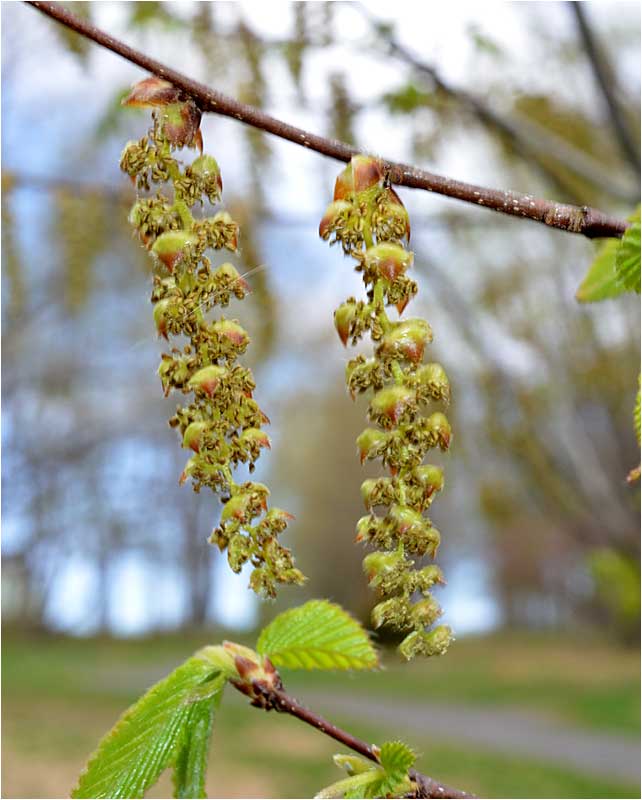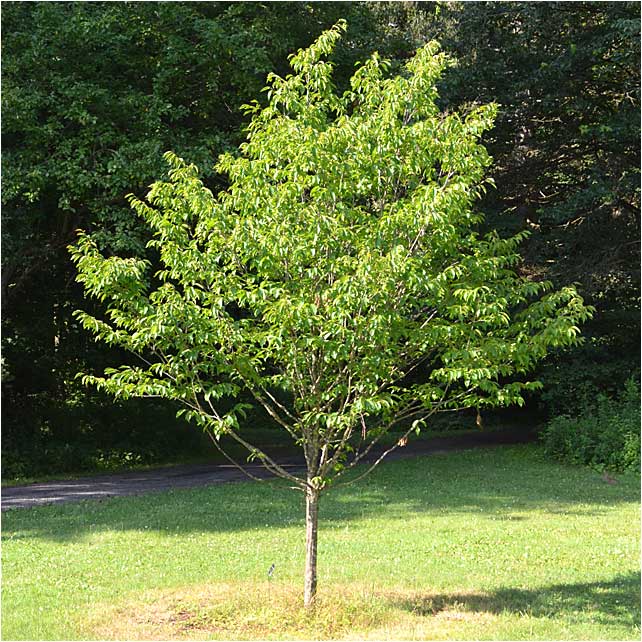52. AMERICAN HORNBEAM
Carpinus caroliniana

This American Hornbeam is a new planting by Park Naturalist Douglas Jackson in 2020. Also known as Musclewood (mature bark looks muscular), Hornbeam grows well in the shade of taller trees. It is a smaller tree, rarely to 30 ft., and approximately as wide as it is tall. In early Spring (April) we see new Spring foliage starting to emerge.
SPRING, FLOWERS

In May, the leaves emerge, but are accompanied by male catkins. Hornbeams are monecious trees (M/F flowers on same tree) and the female flowers are inconspicuous. As this tree matures, both the Spring flowers and Fall fruit will become more visible.
NEW GROWTH

The male flowers, like most catkins, are attractive and easy to see. They will drop off the tree when they are through dispensing pollen. Overall, this eastern U.S. native is a wonderful addition to any landscape - it supports a tremendous range of Lepidoptera (butterflies and moths) as well as other wildlife.
SUMMER

Summer view of the new planting of American Hornbeam. The tree now has a diameter of almost 3 inches - a good indicator it has settled into its new home. Trees new to an environment (transplants or new growth) take at least a year and usually two to establish firm root systems. Once the root system is established, the tree will resume its annual growth rate.
WINTER, USES

Winter shows us the compact shape of American Hornbeam, and combined with its shade tolerance this tree is an excellent choice for front yard or side yard plantings. The wood is not harvested commercially, but it is used for specialty crafts and fine wooden tools. Mallets, wedges, turned bowls, and specialty tool handles are all made of Hornbeam. The wood is the hardest of any eastern hardwoods.